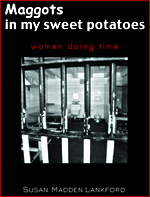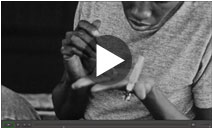
Inmates performing Shakespeare near Boston.
Photo courtesy of Juvenile Justice Information Exchange
Programs in Texas, Massachusetts and Indiana illustrate efforts to foster “family engagement,” which has become a buzzword in juvenile justice circles. It’s about building bridges between family members — or other key figures in youths’ lives — and the staff at juvenile facilities that house the youngsters.
Inside juvenile correctional facilities in Massachusetts, young offenders study Shakespeare, rehearse for weeks and then perform the bard’s works before their relatives.
In Texas, incarcerated youths lead their relatives to schools inside juvenile facilities, where they introduce their teachers and showcase their work in classrooms. A state juvenile justice staffer likens the visits to the sort of open house you might expect at a public school.
Indiana juvenile authorities have greatly expanded visiting hours at their facilities, and even late-night visits can be arranged to accommodate a family member’s schedule. For those who can’t make it in person, Indiana facilities — like those in some in other states — offer virtual visits through videoconferencing technology such as Skype.
Experts, supported by a growing body of research, say fostering family engagement improves incarcerated youths’ behavior, helps families feel more connected, reduces disciplinary incidents and boosts the staff morale. Moreover, strengthening these connections better prepares youths for a return to the home or community upon release — and reduces repeat offenses.
Nonetheless, critics complain that for all the progress in building better relations with families, much of the U.S. juvenile justice system in the is still beset by brutal conditions, rampant violence — including sexual assaults of inmates by staff — and widespread use of the psychological torture that is solitary confinement.
Historically, relations between family members and juvenile facility staff have been marked by mistrust and, at times, actual hostility. In fact, the first U.S. juvenile facilities explicitly tried to isolate kids from their families. Staff at many juvenile facilities still act as if family members are to blame for youths’ offenses and therefore treat the family members with disdain and disrespect.
Family members often view officials at juvenile facilities not as allies, but as obstacles, to the ostensible goal of the juvenile justice system: rehabilitation of youthful offenders.
Peter Forbes, commissioner of the Massachusetts Department of Youth Services said:
A lot of the parents line up against custodial agencies. They see us as an extension of the court system and the child welfare system that have been removing the kids from their homes and that they’ve had a really bad experience with over a period of years.
“You have to work against that dynamic. You have to be deliberate about how you’re going to break that down. In Massachusetts, we’ve definitely stepped away from the mindset that the parents are the problem.”
Parents and other family members play an integral part of the success of the state’s innovative work with the nonprofit Actors’ Shakespeare Project, based in the Boston suburb of Somerville, MA. Family members and friends form the appreciative audiences for the incarcerated youths’ forays into performances of the bard’s work, such as the comedic play “As You Like It” at the Zara Cisco Brough Center in Westborough, MA.
Actors’ Shakespeare Project, which calls the program “Incarcerated Youth At Play,” says the themes of some Shakespeare plays, such as justice and revenge, violence and grief and the power of love and redemption, can resonate with today’stroubled youths .
Shakespearean “teaching artists” from the nonprofit work for 3-16 weeks with incarcerated youths to create ensembles. English, language arts, theater and social studies teachers in the facilities help youths explore Shakespeare’s plays and write, rehearse and perform within the context of classroom learning.
Sometimes simple things mean a lot to family members, who are often guilt-ridden over what they might have done differently and racked by anxiety. Simply calling families to ask about their schedules instead of just mailing out a notification of a youth’s next monthly treatment plan meeting and holding parent-teacher nights can help break down barriers.
Neelum Arya, research director of the Program in Public Interest Law and Policy at the University of California, Los Angeles, law school, labels such outreach “family-driven justice” in an article in the current issue of the Arizona Law Review. She writes:
We’re in the first decade of this, so we have a long way to go. I would definitely say that there are a few shining stars, but by and large, most facilities in the country are not operating with a particular understanding of how to better involve families in the system. The fact is that at this point, the examples are few and far between.
The Texas Juvenile Justice Department has made family engagement a top priority as part of efforts to overhaul the department in the aftermath of a scandal over rampant sexual abuse. Among other reforms, the department developed a 12-provision “Parents Bill of Rights” and a family handbook detailing facility policies.
Arya points to the widely cited “Missouri Model” and lauds the state for putting a premium on family engagement and for viewing families as experts. Missouri’s Division of Youth Services state advisory board includes parents of two youths who had been incarcerated.
The division assigns a specific “service coordinator” to work with each incarcerated youth’s family, starting within days of sentencing and continuing throughout the youth’s time with Missouri’s DYS. The service coordinators make home visits to meet with families and put them more at ease than they would be in an institutional setting.
Most youths are placed within 50 miles of their homes, with flexible visitation policies and transportation offered to families.
Nationally there is widespread agreement among families that the majority of juvenile detention and corrections facilities are geared towards punishment, not treatment, and that they are inappropriate for their children. Even the decor of a facility can make a “huge difference. Is children’s artwork on the wall? Are there positive examples of children succeeding or examples of messages saying your children are constantly in trouble?
Sue Badeau, a longtime Philadelphia juvenile justice advocate strikes a cautionary note about the progress of family engagement. Badeau said it’s much easier for agencies to adopt cosmetic or highly visible changes like expanding visiting hours or scheduling events than to genuinely change the an institution’s culture so that its staff values family engagement.
Badeau and her husband are the parents of six children who have spent time in the juvenile or adult criminal justice systems. In 2011, she served a one-year fellowship focused on family engagement with the federal Office of Juvenile Justice and Delinquency Prevention and has spoken and written widely on the subject.
Badeau said:
The real work comes for systems to really determine whether they value the role of families. Even if they had a party or improved the visiting hour schedule or something like that, the question is how are they doing as far as training with their staff on the role of families? Do they value families? What do they see in terms of how they engage families in the actual planning for their child’s programming and treatment and how their lives will be once they leave the facilities?
Staff must be trained to build positive relationships with youth and their families. Family engagement should be part of staffers’ job descriptions and one of the skills included in staff evaluations.
Youth and their families should have some say in choosing which relatives or others such as mentors, coaches or family friends the facilities should deal with. Badeau pointed to innovations including “family-to-family peer support” and said families should be tapped to help train facility staff and sit on advisory boards and similar groups at local, state and federal levels.
Oregon, known for its progressive juvenile justice policies, has created a family engagement coordinator position to improve the connection between facilities and family members or other adults who play a big role in youths’ lives.
Faith Love, family engagement coordinator for the Oregon Youth Authority, said:
Youths’ behavior may be linked to their home life. By connecting with the families, OYA can help address unmet needs for food, shelter and employment as well as medical, mental health and substance abuse treatment. Adults in youths’ lives may need coaching and support to help incarcerated youths, sometimes involved with multiple systems.
Most of the families we work with are either exhausted from or unsure how to deal with the behavior of their child. They may have previously sought help from multiple sources. Some families are hurt, ashamed and not sure of how best to become involved. It is extremely rare for any parent not to want something good and better for their child.
Sometimes, encouraging family engagement means paying for hotel stays, bus tickets or gasoline so the relatives can visit youths in facilities far from their homes.
Among efforts to increase family engagement in other states:
•Ohio juvenile authorities collaborated with the nonprofit, New York City-based Vera Institute of Justice on the “Families as Partners: Supporting Youth Reentry” program to encourage more frequent visitation and correspondence and increase family involvement in youths’ treatment and re-entry plans. Working with two juvenile facilities for boys, Vera researchers found increased family visitation improved youths’ behavior and school performance. Vera highlighted the importance of visitation and suggested that other juvenile facilities change visitation polices and take other steps to promote more frequent visitation.
•The “Baby Elmo Program” being piloted in Santa Clara County, CA and elsewhere, focuses on strengthening relationships between incarcerated teen fathers and their infants. The project relies on a standardized curriculum for the 10-week course. Facility personnel use “Sesame Street” videos to teach the fathers ways to interact with their babies. Many of the incarcerated youths did not have a strong father figure in their lives. Early results are promising, showing fathers the big role they can play in their children’s development and helping the babies develop bonds with their fathers.
•The New Jersey Juvenile Justice Commission has issued a request for proposals to assess the “family friendliness” of current visitation at the New Jersey Training School for Boys in Monroe Township; to provide staff training on the importance of family engagement and ways to encourage it, including peer family advocacy and support; and to help families navigate the juvenile justice system. The training school, which has come under criticism for extensive use of solitary confinement, is New Jersey’s largest juvenile facility, holding up to about 200 boys.
Kevin M. Brown, JJC’s executive director, said:
We need to challenge ourselves to view policies and practices through the eyes of family members, in order to assess whether they are family-friendly and actively promote and support family involvement. If we can help families, we can help young people succeed.
Kim Godfrey, executive director of nonprofit, Braintree, MA-based Performance-Based Standards, which helps agencies and facilities monitor and improve conditions and treatment, noted that most youths will return to their families upon release. He said:
All kids want to be with their families, and kids leave the juvenile justice system to go back to the community and be with their families. And we need to support that relationship and strengthen it, rather than sever it, while they’re in custody.

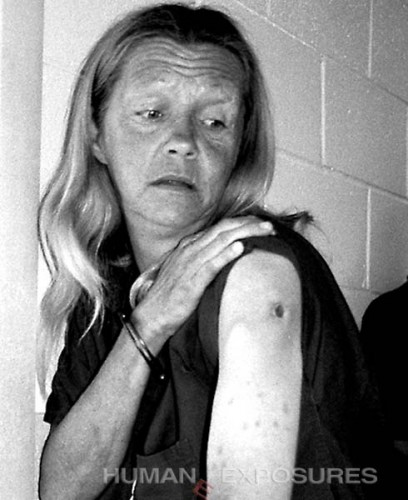 n the Status of Women calls upon the Tulsa community to support the efforts of local organizations that address issues surrounding female incarceration.
n the Status of Women calls upon the Tulsa community to support the efforts of local organizations that address issues surrounding female incarceration.
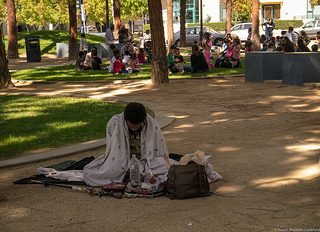

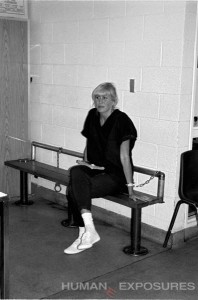

![Brook-Park-Farming-edit[1]](http://humaneexposures.com/blog/wp-content/uploads/2014/10/Brook-Park-Farming-edit1.jpg)








